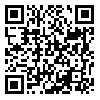Volume 37, Issue 4 (2-2014)
Research in Medicine 2014, 37(4): 232-238 |
Back to browse issues page
Abstract: (7364 Views)
Abstract Background: Excessive consumption of antimicrobial materials in hospitals and the community is as the main encoder, led to the emergence, development and acquisition of new bacterial resistance to antimicrobials. According to the lack of enough information about the mechanisms of the resistant genes to disinfectants and receiving no report from the country and considering the resistance or sensitivity of the isolates of the Acinetobacter baumannii MDR in facing disinfectants, this study was taken place in the selected intensive care units if the hospitals of Tehran. Materials and methods: This experimental study which was conducted over a period of 10 months, Acinetobacter baumannii species were separated by culture and biochemical tests. The resistance and sensitivity of the isolates to antibiotics is considered according to CLSI (2012) guidelines. By multiplex PCR method blaCTX and blaTEM were detected and finally, MDR strains were treated with 2% glutaraldehyde. Results: Of 588 samples, 131 isolates (22.28%) of Acinetobacter baumannii were isolated. The amount of the resistance to various antibiotics was in the range of the 69.4% to 100%. The frequencies of the blaTEM and blaCTX were 3.2% and 19.4%, respectively, and there was no resistance to glutaraldehyde. Conclusion: It seems that beside variety and prevalence of blaTEM and blaCTX, enormous mechanisms like porin and leaking systems (efflux Pumps) are responsible in the making of the resistance of Acinetobacter baumannii to disinfectants. Also these results facilitated the study of phenotypic and genotypic resistance patterns of these antimicrobials and disinfectants in different parts of the world. Keywords: Acinetobacter baumannii, Lactamase genes, Disinfectants, Antimicrobial resistance.
Type of Study: Original |
Subject:
Microbiology
Received: 2014/05/3 | Accepted: 2014/05/3 | Published: 2014/05/3
Received: 2014/05/3 | Accepted: 2014/05/3 | Published: 2014/05/3
| Rights and permissions | |
 |
This work is licensed under a Creative Commons Attribution-NonCommercial 4.0 International License. |
